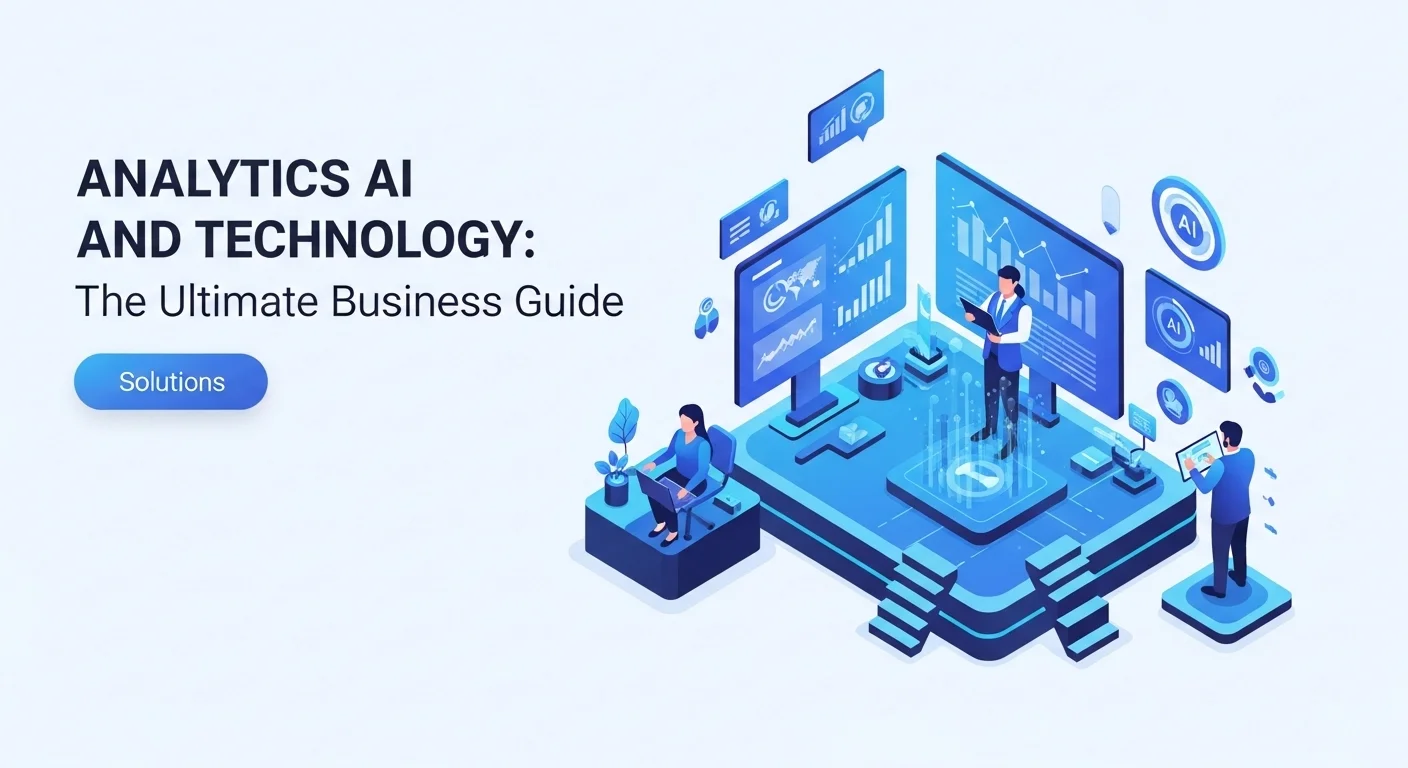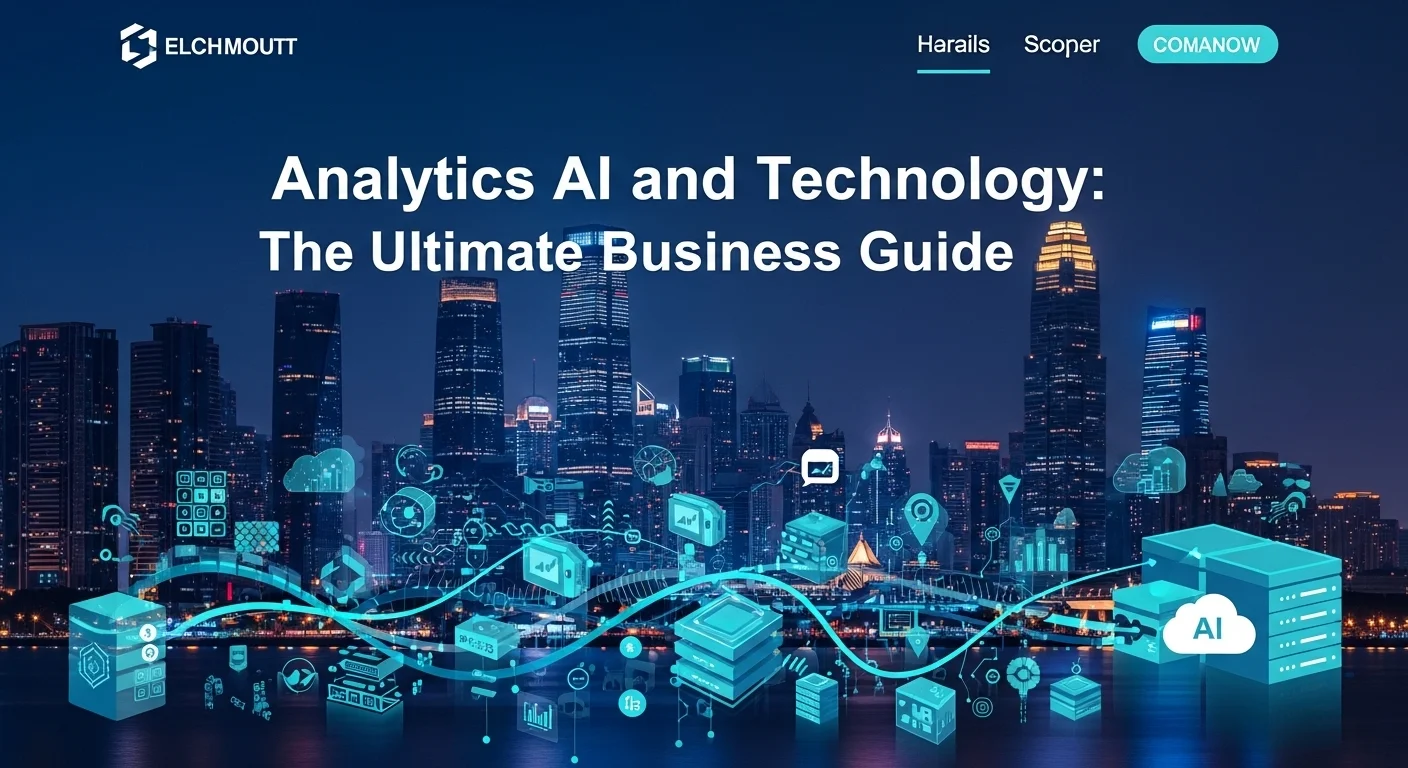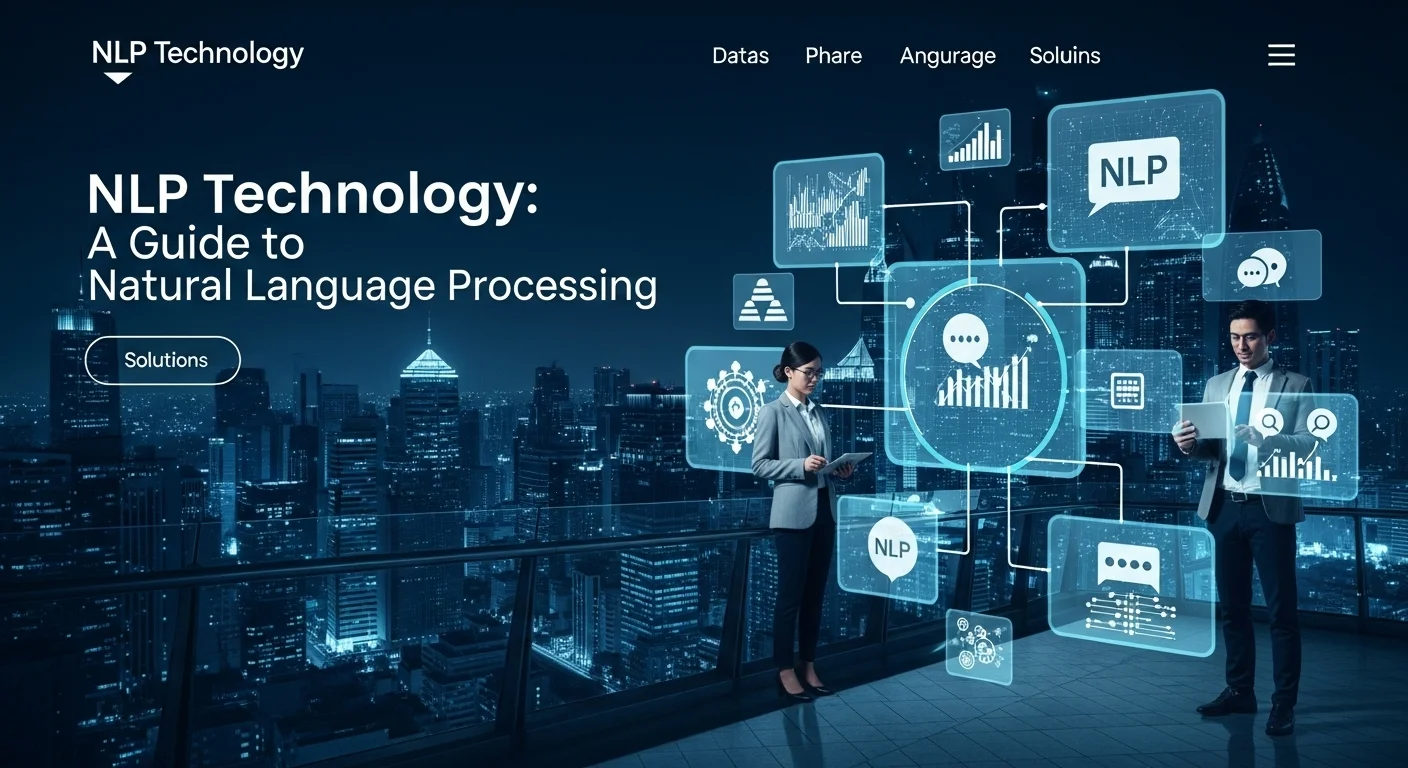Analytics AI: How to Use Smart Data to Grow Your Business

Executive Summary
In today's business world, we're swimming in data. But having data isn't enough; you need to turn it into smart decisions. That's where the magic of Analytics AI comes in. This isn't some far-off, futuristic concept—it's a real tool that businesses, big and small, are using right now to get ahead. In my experience, the biggest shift is moving from just looking at what happened in the past to accurately predicting what comes next. This guide is my way of breaking down Analytics AI for you. We'll walk through what it is, how it works, and how you can start using it to find hidden opportunities, make your operations smoother, and connect with your customers in a way you never thought possible. Whether you're a business owner wanting to grow or a tech pro staying on top of the trends, this article will give you the practical knowledge you need.
Table of Contents
Table of Contents
- What is Analytics AI and Why Does It Matter?
- The Building Blocks of Analytics AI
- How Analytics AI is Changing the Game
- Real-World Examples of Analytics AI in Action
What is Analytics AI and Why Does It Matter?
For years, I've seen companies collect mountains of data, hoping it holds the key to success. But the real game-changer isn't the data itself—it's how you interpret it. This is where Analytics AI comes in. Put simply, it’s the use of artificial intelligence (AI) and machine learning (ML) to supercharge your data analysis. Think of traditional analytics as looking in the rearview mirror; it tells you what’s already happened. Analytics AI, on the other hand, is like having a GPS for your business; it tells you what’s likely to happen next (predictive analytics) and even suggests the best route to take (prescriptive analytics). It uses smart algorithms to dig through your data, spotting patterns and finding insights at a speed and scale no human team could ever match. This isn't just a minor upgrade; it's a fundamental change that's reshaping how successful businesses operate across every industry.
The Building Blocks of Analytics AI
To really get what Analytics AI can do, it helps to know what's under the hood. It’s not one single thing, but a combination of powerful technologies:
- Machine Learning (ML): This is the engine. I like to think of ML algorithms as tireless students. You feed them your past data, and they learn to spot patterns. Once trained, they can predict things like which customers might be about to leave, so you can step in before they do.
- Natural Language Processing (NLP): This gives AI the ability to understand human language. It's incredibly valuable for making sense of unstructured data like customer reviews or social media chatter. With NLP, you can instantly gauge how people feel about your new product without reading thousands of comments by hand.
- Deep Learning: This is a more advanced type of machine learning that's great for tackling really complex data, like recognizing images or understanding spoken commands. It opens up even more possibilities for analysis.
- Generative AI: This is the new kid on the block, and it's a big one. Generative AI can take complex data findings and write a simple, easy-to-understand summary. This helps make data insights accessible to everyone in the company, not just the data experts.
How Analytics AI is Changing the Game
I remember the days when getting a business report was a slow, painful process. You'd ask a question, and a week later, an analyst might come back with a static report. By then, the opportunity might have passed. Analytics AI changes that entirely by automating and speeding up the whole process. Here’s what that means for you:
- Incredible Speed: AI can analyze huge datasets in seconds. This allows you to make decisions in real-time, reacting to market shifts as they happen, not weeks later.
- Better Accuracy: AI models remove human bias and error from the number-crunching part of analysis. They can spot subtle connections in the data that a person might easily miss, leading to more reliable insights.
- Effortless Scalability: As your business and your data grow, AI systems scale right along with you. You can handle more data without needing to hire a proportionally larger team of analysts.
- Data for Everyone: One of the things I love most about modern AI tools is that they make data easy for everyone to use. Team members in marketing or sales can ask questions in plain English and get immediate answers, creating a culture where everyone makes smarter, data-informed decisions.
- Looking Forward, Not Backward: The real power is in prediction. Instead of just knowing your sales numbers from last quarter, you can forecast future demand with surprising accuracy. This helps with everything from managing inventory to planning your next big marketing push.
Real-World Examples of Analytics AI in Action
This technology is already everywhere. When Amazon suggests a product you might like, that's Analytics AI at work, driving sales through personalized recommendations. In finance, AI systems are constantly scanning for fraudulent transactions, protecting customers in real-time. Even small businesses are getting in on the action. I've worked with small e-commerce shops that use simple AI tools to figure out why visitors leave their site, helping them fix issues and increase sales. A local restaurant can use it to analyze online reviews and pinpoint exactly what they need to improve. Embracing Analytics AI isn't just an option anymore; it's essential for staying competitive. It gives you a clearer view of your business today and a reliable map for navigating the future.

A Practical Guide to Using Analytics AI in Your Business
Getting started with Analytics AI is more than just buying software. It's about having a smart plan. In my work, I've seen that the most successful companies are the ones that understand the methods, know the applications, and choose the right tools for the job. This guide will walk you through that process, helping you turn your data from a messy pile into your most valuable asset.
A Simple Look at the Technical Methods
The core of Analytics AI lies in its machine learning models. You don't need to be a data scientist to understand the basics, but knowing the main types helps you ask the right questions.
- Supervised Learning: This is the most common approach. You teach the AI using data that's already been labeled with the correct answer. It's like giving a student a practice test with an answer key.
- Regression: Use this when you want to predict a number. For example, forecasting your sales for next month or estimating a property's value.
- Classification: Use this to sort things into categories. Think of your email's spam filter or an app that tells you if a customer is a high-value lead.
- Unsupervised Learning: This is what you use when your data isn't labeled. You let the AI explore the data and find interesting patterns on its own, like a detective looking for clues without any initial suspects.
- Clustering: This groups similar items together. For instance, you could use it to segment your customers into different groups based on their buying habits, allowing for much more effective marketing.
- Association: This finds relationships between things. The classic example is a store discovering that customers who buy diapers often buy beer, too. It's great for product recommendations.
- Reinforcement Learning: This is like teaching a pet a new trick. The AI learns through trial and error, getting 'rewards' for good decisions and 'penalties' for bad ones. It’s perfect for optimizing things like ad spending or supply chain logistics.
Often, the best solution involves a mix of these methods to solve a business problem from all angles.
Smart Business Techniques Powered by Analytics AI
These technical methods lead to powerful business insights. I like to think of it as a journey with four stages, each more valuable than the last:
- Descriptive Analytics (What happened?): This is your basic business reporting, but AI makes it better by automatically writing simple summaries of your dashboards.
- Diagnostic Analytics (Why did it happen?): When sales suddenly drop, an AI can dig through all the data instantly to find the root cause, a task that would take a human analyst days.
- Predictive Analytics (What's going to happen?): This is where it gets exciting. Using past data, you can reliably forecast future trends, from customer demand to potential equipment failures.
- Prescriptive Analytics (What should we do about it?): This is the ultimate goal. The AI doesn't just predict the future; it recommends specific actions you can take to get the best outcome. For example, it could tell you the perfect price to set for a new product to maximize profit.
A Look at Available Tools and Resources
The market is full of great tools, and you don't need a huge budget to get started. Here’s a breakdown of the main categories:
- Business Intelligence (BI) Platforms with AI: These are great for adding AI power to your existing reports.
- Tableau: Famous for its beautiful visualizations, it now uses AI to let you 'ask' questions about your data in plain English.
- Microsoft Power BI: A fantastic choice if you already use Microsoft products. It has built-in AI features that make building predictive models surprisingly easy.
- Google Looker: A powerful tool that connects seamlessly with Google's other AI services, perfect for deep data exploration.
- Dedicated AI and Machine Learning Platforms: For when you want to build your own custom solutions.
- AWS SageMaker & Google Cloud AI: These are the professional-grade toolkits from Amazon and Google for building, training, and deploying powerful AI models.
- Databricks: A popular all-in-one platform that brings together data engineering and data science.
- No-Code/Low-Code AI Platforms: These make AI accessible to everyone.
- Akkio: A very user-friendly tool that lets you build forecasts and analyses without any coding.
- MonkeyLearn: Specializes in analyzing text, so you can easily sort through customer reviews and survey responses to find out what people are really thinking.
The right tool for you will depend on your budget, your team's skills, and what you're trying to achieve.
Your Roadmap: From Strategy to Real Value
A successful AI project follows a clear path. Here’s the roadmap I recommend to clients:
- Start with a Business Goal: Don't start with the tech. Start with a problem. What do you want to achieve? A clear goal will guide every decision you make.
- Get Your Data in Order: Good data is everything. This step involves gathering, cleaning, and organizing your data. It takes time, but there are no shortcuts here.
- Choose and Train Your Model: Based on your goal, you'll select the right type of machine learning model and train it with your clean data.
- Test and Tune: Once trained, you need to test the model's accuracy. It's like grading its final exam. You'll likely need to tune it a few times to get the best performance.
- Deploy and Integrate: Now, you put the model to work in your day-to-day operations, integrating it with your CRM or other business systems.
- Monitor and Maintain: An AI model needs to be monitored to make sure it stays accurate over time. Data changes, and your model will occasionally need a tune-up to keep performing well.
By following this structured approach, you can successfully bring Analytics AI into your business and turn its power into real, measurable results.

Practical Tips for Getting the Most Out of Analytics AI
Bringing Analytics AI into your business is a journey, not a destination. From my experience, success comes from a blend of smart strategy, the right tools, and a willingness to learn. Here are some practical tips and strategies I've seen work time and again to help companies truly benefit from this amazing technology and get a real return on their investment.
Best Practices for a Successful AI Project
To avoid common headaches and get things right from the start, I always advise sticking to these core principles:
- Start Small with a Clear Win: Don't try to solve every problem at once. Pick one specific, important business challenge that AI can tackle. A focused pilot project with clear goals, like improving the results of a marketing campaign, will show value quickly and get everyone excited for what's next.
- Focus on Data Quality: I can't stress this enough: your AI is only as good as the data you feed it. Think 'garbage in, garbage out.' Before you do anything else, make sure your data is clean, accurate, and well-organized. It’s the foundation for everything.
- Build a 'Dream Team': You need a mix of skills. Get your data scientists, your business experts who know your industry inside and out, and your IT folks all in the same room. When these different perspectives work together, that's when the magic happens.
- Think About Ethics and Bias: AI models learn from past data, which might contain old biases. It's critical to check your models to make sure they are fair and to be transparent about how they work. This builds trust and prevents unintended negative consequences.
- Create a Culture of Learning: The world of AI changes fast. Encourage your team to experiment, try new things, and not be afraid to fail. Invest in training to help everyone in the company become more comfortable with data and AI.
- Plan for the Future: From day one, think about how your solution will grow with your business. Choose technology that can scale and be sure your AI tools can plug into the other systems you already use. This makes them much more powerful.
Exploring Essential Tools for Your Business
The right tool can make all the difference. While there are tons of options, here are some of the go-to tools that businesses use to get real results with Analytics AI.
- For Seeing Your Data Clearly:
- Tableau: It's famous for a reason. Tableau makes it incredibly easy to create charts and graphs that tell a clear story. Its AI features even let you ask questions in plain English to uncover insights automatically.
- Microsoft Power BI: If your company runs on Microsoft, this is a fantastic choice. It plugs into tools like Excel and has powerful, user-friendly AI features for making predictions.
- For Making Predictions:
- SAS Viya: This is a powerful, professional-grade platform that covers everything from preparing data to building and managing complex predictive models.
- Alteryx: This tool is a lifesaver for analysts. It automates the tedious work of cleaning and blending data from different sources and lets you build predictive workflows visually, without needing to be a coding expert.
- For Understanding Customer Feedback:
- MonkeyLearn: A fantastic no-code tool that helps you analyze text from customer surveys, online reviews, and social media. It can quickly tell you what topics people are talking about and how they feel.
- IBM Watson Studio: For deeper text analysis, Watson provides powerful tools to pull meaning from huge volumes of documents, reports, and other unstructured text.
- For Making AI Easy for Everyone:
- ChatGPT Advanced Data Analysis: This is a game-changer. You can upload a spreadsheet and just start asking questions about it. It can create charts, find trends, and explain what the data means, making analysis accessible to anyone.
- Google Analytics with AI: The latest version of Google Analytics uses AI to automatically point out important changes in your website traffic and can even predict which visitors are likely to make a purchase.
When picking a tool, always think about how easy it is to use, how well it connects with your other software, and its total cost. For up-to-date information on the tech landscape, I often recommend checking out a trusted source like TechCrunch.
Real-World Success Stories
The true impact of Analytics AI comes to life in real-world examples. Imagine an online clothing store using AI to predict which styles will be popular next season, preventing them from ordering too much or too little stock. Or a financial advisor using AI to build personalized retirement plans based on a client's specific goals and comfort with risk. These successful projects all started with a clear business goal and the smart application of the right tools. By following these best practices, your company can also harness the power of Analytics AI to make smarter decisions, work more efficiently, and build a real competitive edge.
Expert Reviews & Testimonials
Sarah Johnson, Business Owner ⭐⭐⭐
A solid introduction to Analytics AI. As a small business owner, I'd love to see a follow-up piece with more step-by-step case studies for smaller companies.
Mike Chen, IT Consultant ⭐⭐⭐⭐
This article really clarified the difference between predictive and prescriptive analytics for me. A great resource for IT pros trying to explain these concepts to business stakeholders.
Emma Davis, Tech Expert ⭐⭐⭐⭐⭐
Finally, an article that puts it all together! As a tech specialist, I appreciated the comprehensive breakdown of tools and the implementation roadmap. This is getting bookmarked for sure.



